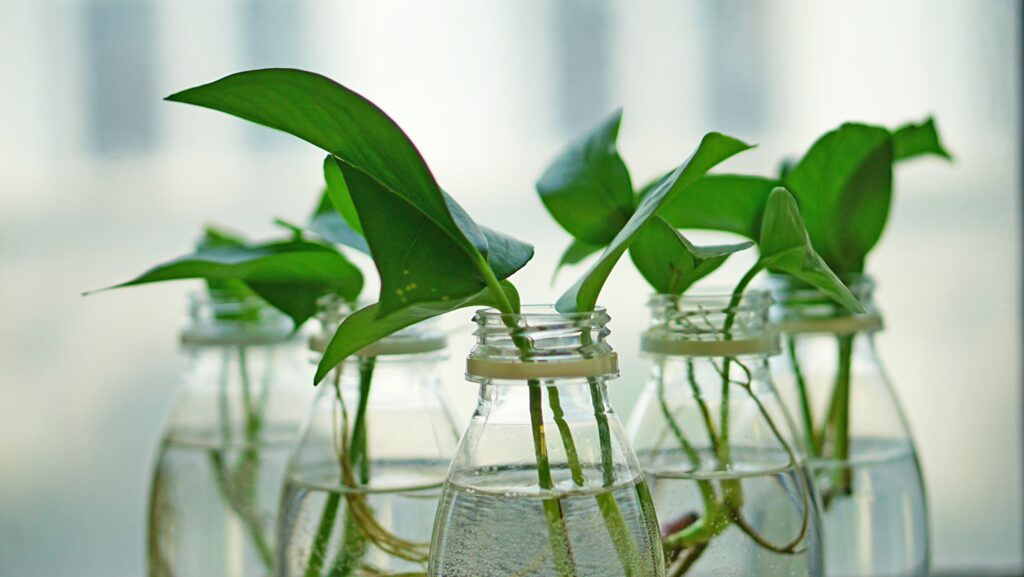The days are getting longer as summer approaches and the temperatures are rising. Many plants in the landscape and house plants are growing fast. Once plants are growing well, it is a good time to propagate a few to increase your beds and to have a few plants ready to gift for birthdays, hostess gifts, and the upcoming holidays. Here is a look at how to propagate your plants, but skip rooting in water.

Many landscape and house plants can be propagated from grown from cuttings, seeds, layers, and root suckers. This article will focus on cuttings. Here is a fabulous in-depth plant propagation resource for gardeners from NC State Extension, Chapter 13 from The North Carolina Extension Gardener Handbook.
Cuttings are a prevalent method of propagation. There are several types of cuttings, including softwood – cuttings are taken from this year’s growth – good for crotons, semi-hardwood cuttings, which are taken after new growth has matured but before the stem turns woody – good for firebush; hardwood from mature wood – suitable for many shrubs, and leaf bud cuttings that include the leaf itself, the petiole or leaf stem, and a 1/2 to 1-inch portion of the stem – good for pothos and African violets.
The key to successful plant propagation is the environment where the cuttings are placed. The best conditions have close to 100 percent humidity, moderate light levels, mild but warm temperatures, and pest-free medium or soil.
A note about propagating in water: sticking a cutting in a glass of water and leaving it on the window sill has been a gardener’s method for eons. It sometimes works, but have you ever visited a commercial nursery and found hundreds of cuttings stuck in containers of water? I haven’t. Cuttings and roots need oxygen and aerated water, such as used in hydroponic production. Still water is quickly depleted of oxygen. Water propagation can increase the chance of root rots, and some plants will not grow roots in water. There is evidence that roots grown in water differ from those grown in soil.
If you propagate in water, keep it clean, change it often, and watch the cuttings closely. The cuttings in water should be moved to soil quickly once root growth begins. The signs cuttings are ready for transplant are small, white roots and/or swelling root nodes at the base of the stem.
Forgo the water and stick cuttings in a propagation chamber. One of the simplest propagation units to build is constructed from a 2-liter soda bottle. Cut the bottle so 3 to 4 inches are left on the bottom for soil. Punch a few holes to allow drainage and fill the bottom portion with clean builder’s sand or sterile potting soil with perlite added to help drainage. These types of rooting media are usually pest free and promote healthy roots.
Take 4 to 6-inch-long cuttings with a sharp knife or pruning shears. Remove the leaves from the bottom inch or two of the stems and place the cutting in the already moist rooting medium. Firm the soil around the cutting and water again. Rooting hormone does increase the rooting of some cuttings. Refer to the hormone label for usage guidelines. Dip the stems in hormone before putting them in the soil. Place the top of the soda bottle on top and remove the bottle top. Place the propagation unit in the shade, keep an eye on the soil, and add water if needed. Firebush should produce roots in 1 to 2 months.
This informative article from the venerable Missouri Botanical Garden has clear graphics about propagation and the kinds of cuttings to take for specific plants. Also, check out Propagating Foliage & Flowering Plants from Texas A & M Extension and Purdue University, New Plants from Cuttings.
Leave a Reply